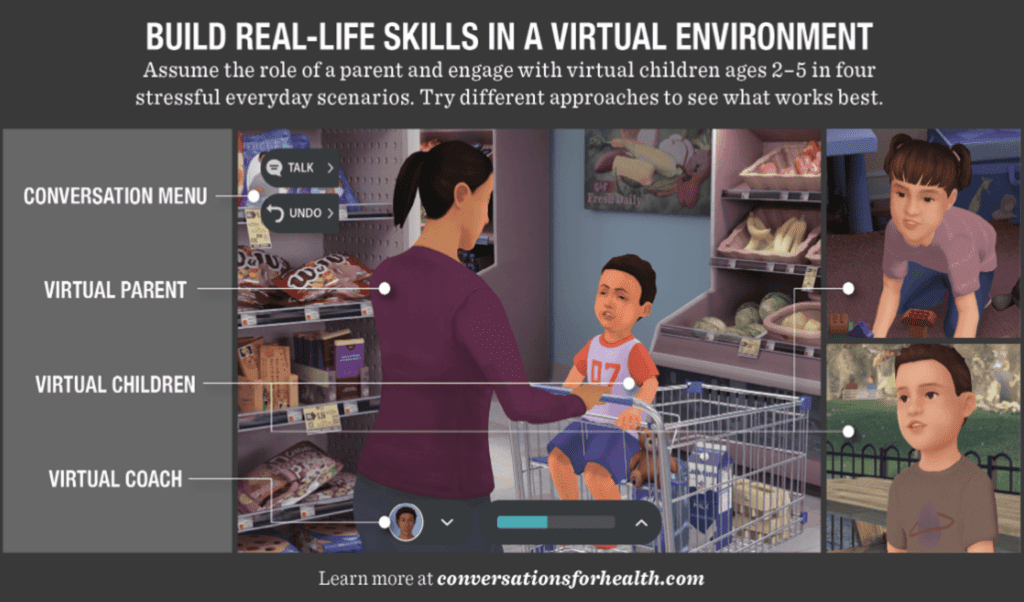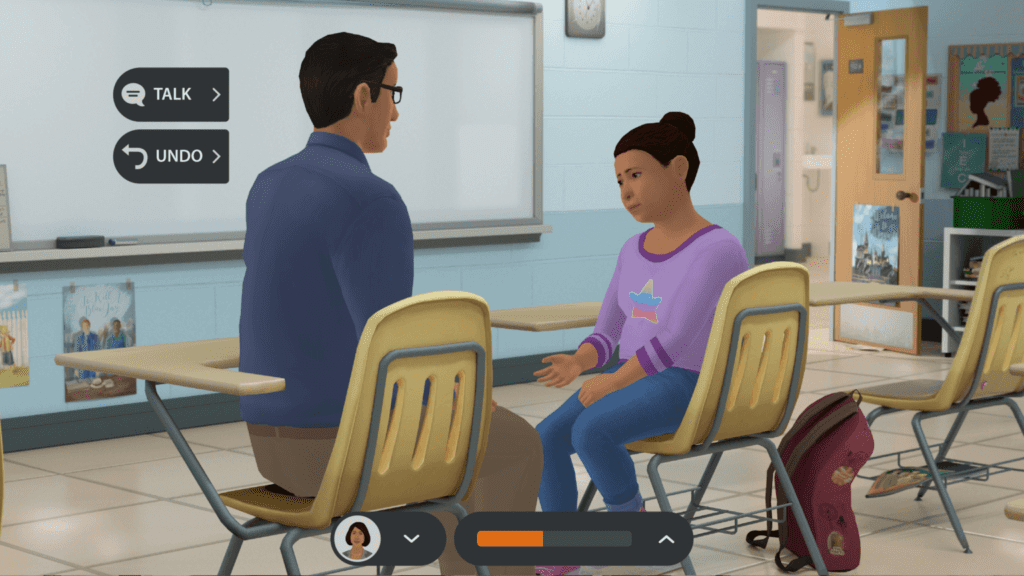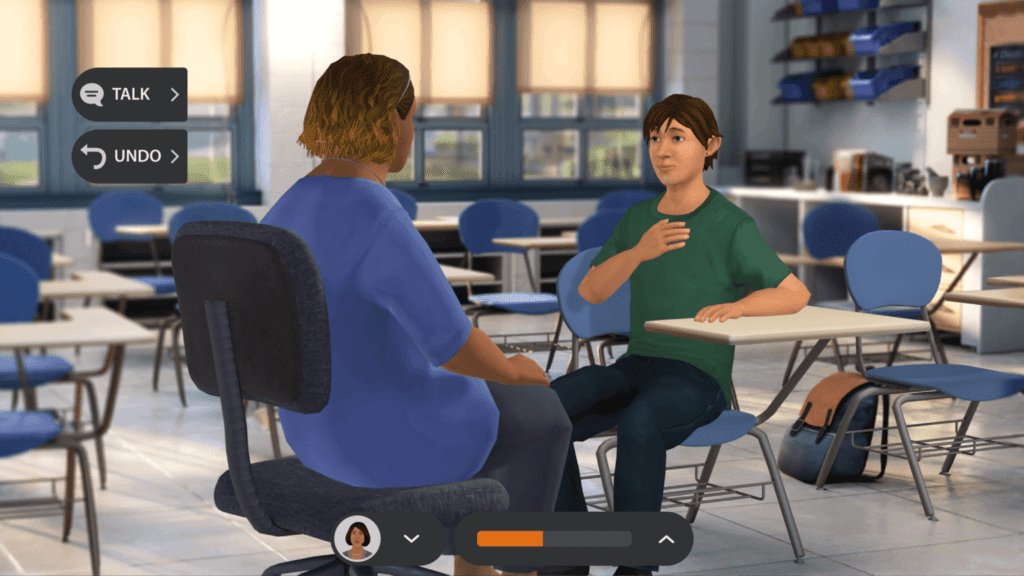Moving Suicide Prevention Upstream
The most effective suicide prevention takes place upstream — at home and in the classroom.
September is National Suicide Prevention Month, a time to bring awareness to the issues surrounding suicide and the role we can all play in helping people in crisis — or prevent them from getting to that point — through the power of conversation.
Suicide is the second-leading cause of death for youth ages 14-18. During 2019, nearly 20% of students reported having seriously considered suicide, and four out of five individuals who attempt suicide have given clear warning signs. Evidence shows that the earlier we can prevent risk factors and detect warning signs, the better.
We know that Adverse Childhood Experiences (ACEs) such as abuse and neglect are risk factors for suicide. We also know that recognizing warning signs in the classroom and reaching students early can have a profound impact. The most effective suicide prevention takes place upstream — starting with parents and then with educators in the classroom.
In this blog post, we’ll share the role parents and educators play in suicide prevention, and how our interactive trainings can prepare them to be effective gatekeepers and responders.
Suicide Prevention: A Parent’s Role
Parents and household members play a part by reducing Adverse Childhood Experiences (ACEs) that increase the risk of suicide and self-harming behaviors.
There is a powerful relationship between Adverse Childhood Experiences (ACEs) and suicidal ideation and attempts. In a National Longitudinal Study of Adolescent Health spanning 13 years with 9,421 participants, the odds of seriously considering suicide or attempting suicide in adulthood increased more than threefold among those with three or more ACEs.
ACEs are more common than you might realize.
- Over ⅓ of children in the U.S. have experienced corporal punishment
- 61% of adults have experienced at least one type of ACE
- 30% of Americans experience 2+ ACEs by age 17
Early childhood is a critical developmental period, and parents can have a major impact on their child’s lifelong health and wellbeing. Parenting during the early years can be incredibly challenging, and parenting programs have been shown to be effective public health approaches to reducing child maltreatment.
We know parents are busy, and not everyone has time to dedicate to regular parenting classes. Our free simulation, Calm Parents, Healthy Kids, helps parents learn how to be responsive in a calm and loving way. It takes as little as 30 minutes to complete, and includes common situations for parents of 2- to 5-year-olds:
- Interrupting while you’re on the phone
- A temper tantrum in the supermarket
- Hitting another child at the playground
- Leaving the house on time

In the interactive learning experience, parents learn evidence-based techniques that can help them manage these stressful situations and support their child’s healthy social and emotional development. 100% of family care workers who took the simulation said they would recommend it to other parents.
If you’re a parent to young children, we invite you to take the simulation here. Consider sharing it with parents you know who want to understand their children’s behavior and prepare them for a future in which they are healthier, happier, and more successful.
How Educators Can Help Students in Crisis
Educators are facing a tsunami of mental health concerns as a result of pandemic-related stress. During 2020, the proportion of mental health-related emergency department visits among youth ages 12–17 increased 31% compared with 2019. The events over the last two years have had a profound impact on youth.
What can schools do to support their students during this critical time, as well as create a safe, nurturing environment into the future?
Increase the Availability of School Mental Health Support Services
Students are 21 times more likely to visit school-based health centers for treatment than anywhere else. Unfortunately, less than 3% of public schools meet the recommended mental health clinician-to-student ratio.
Schools that employ more school-based mental health providers see improved attendance rates, lower rates of suspension and other disciplinary incidents, expulsion, improved academic achievement and career preparation, and improved graduation rates. They also see improved school safety.
School-employed psychologists, counselors, social workers, and nurses have relationships with students, parents, and fellow staff members. This puts them in an ideal position to help students. In some rural communities, schools may provide the only mental health services in the area. By making mental health services more accessible as part of the fabric of the school system, we can help to decrease stigma and connect students to the support they need, when and where they need it.
Promote Social Emotional Learning
Social emotional learning (SEL) is “the process through which all young people and adults acquire and apply the knowledge, skills, and attitudes to develop healthy identities, manage emotions and achieve personal and collective goals, feel and show empathy for others, establish and maintain supportive relationships, and make responsible and caring decisions.”
This evidence-based approach has been linked to numerous positive outcomes tied to suicide prevention, including a decline in students’ anxiety, behavior problems, and substance use.
Kognito’s Friend2Friend practice-based simulations can support school districts’ SEL efforts. Middle and high school students build critical life skills through engaging, interactive learning experiences that improve school climate and lead to positive outcomes both in and out of the classroom.
One Ohio school district adopted the Friend2Friend simulation as a peer support program to help students identify friends in distress and motivate them to get support. Before completing the simulation, just 47% of students felt prepared to help a friend thinking about suicide find an adult who can help. After completing the 25-minute simulation, 78% felt prepared to do so, a 31% increase.
If you’d like to explore how incorporating SEL curriculum can help in your suicide prevention efforts, learn more about our Friend2Friend simulations at Kognito.com.
Implement Trauma-Informed Training for Schools
Those who have experienced trauma have an increased risk of various psychiatric disorders, including suicidality (which includes suicidal thoughts, suicidal self-harm, and suicide attempts). This is especially prevalent if a student has been a victim of physical or sexual assault.
For many students, school is their safe place—and a place they can go for help. School staff and teachers need more training to better understand the impact of trauma on students and to help implement trauma-informed strategies and policies, so that they can better support their students.
Trauma-informed practices have already been put in place in many schools throughout the country as the connection between trauma and behavior has become better understood. In some states, trauma-informed teaching is even required. And now, it’s even more important, as students face trauma related to the COVID-19 crisis.
Our simulation, Trauma-Informed Practices, is a 30-45-minute online professional development simulation that builds educators’ awareness of the impact of trauma and teaches effective ways to respond to students who may be experiencing distress as a result of a traumatic experience. The simulation allows teachers and staff to practice talking with virtual students in distress using our innovative conversation platform.
This simulation helps educators:
- Increase knowledge and awareness about the types of experiences that can cause distress or trauma, and how these relate to brain development
- Recognize when a student’s behavior might be the result of trauma or distress
- Lead conversations with a student about how they might be feeling
- Problem-solve ways that their class or school can become a more comfortable place for students who have experienced trauma
- Assess the need for referral, and motivate students to seek help when needed
- Consider educators’ own needs for self-care

You can learn more about Trauma-Informed Practices at Kognito.com, or better yet, try a demo here.
Know How to Recognize and Approach At-Risk Students
While 50% of lifetime cases of mental illness are diagnosed by age 14, many signs may emerge earlier, especially when children are exposed to traumatic life events.
Knowing the signs to look for and how to respond is a critical step in suicide prevention. Recognizing signs of distress is somewhat dependent on age. Early childhood educators may notice a child throwing more temper tantrums, while a high school student could have a drop in grades and attendance.
Kognito’s At-Risk suite of simulations helps educators learn to recognize warning signs of distress, lead conversations with students and parents to lay the groundwork for referral and collaboration, and encourage the child to open up and motivate the parent to access support. There are different simulations for early childhood educators, elementary educators, middle school educators, and high school educators.
Adopted by over 5,000 schools and districts nationally, At-Risk is a research-proven online solution that cost-effectively drives sustainable changes in behaviors that support student wellness, academic performance, attendance and school safety.

Additional Resources and Information
If you or someone you know is in distress and needs immediate support, please call the please call the Suicide & Crisis Lifeline at 988.
We’ve included some additional resources below. Understanding the issues concerning suicide and mental health is an important way to take part in suicide prevention, help others in crisis, and change the conversation around suicide. Thank you for making a difference.
Talking About Suicide:
District Funding for Suicide Prevention Programs:
- Suicide Prevention Training Cost: Where Districts Can Secure Funding to Overcome Budget Barriers
- Youth Suicide Prevention Programs by State
- Finding Professional Development on a Shoestring Budget
Simulations Mentioned in this Article:
- Calm Parents, Healthy Kids
- Friend2Friend: SEL for Students
- Trauma-Informed Practices for K12 Schools
- At-Risk for PK-12 Educators
To see how the power of simulation could help your school or organization’s suicide prevention efforts, request a demo at Kognito.com.